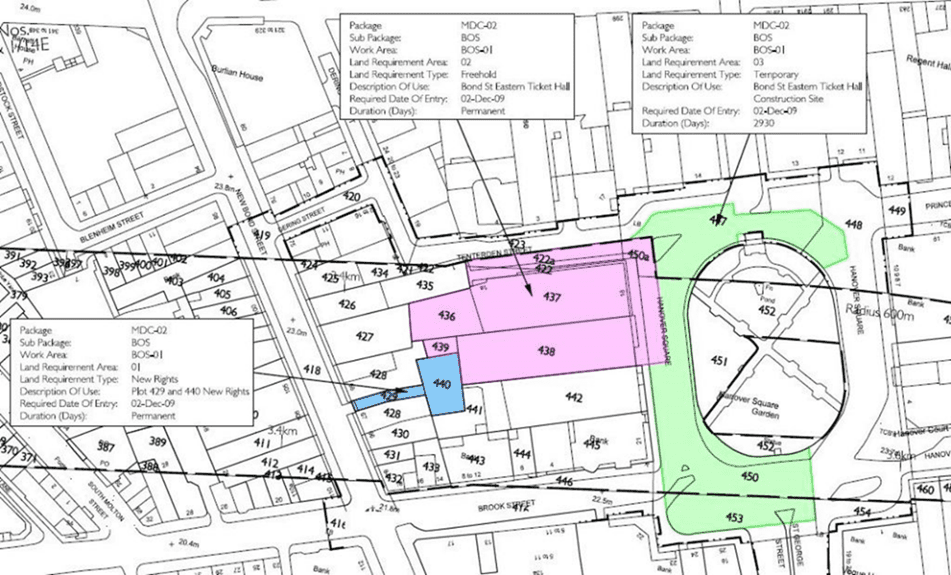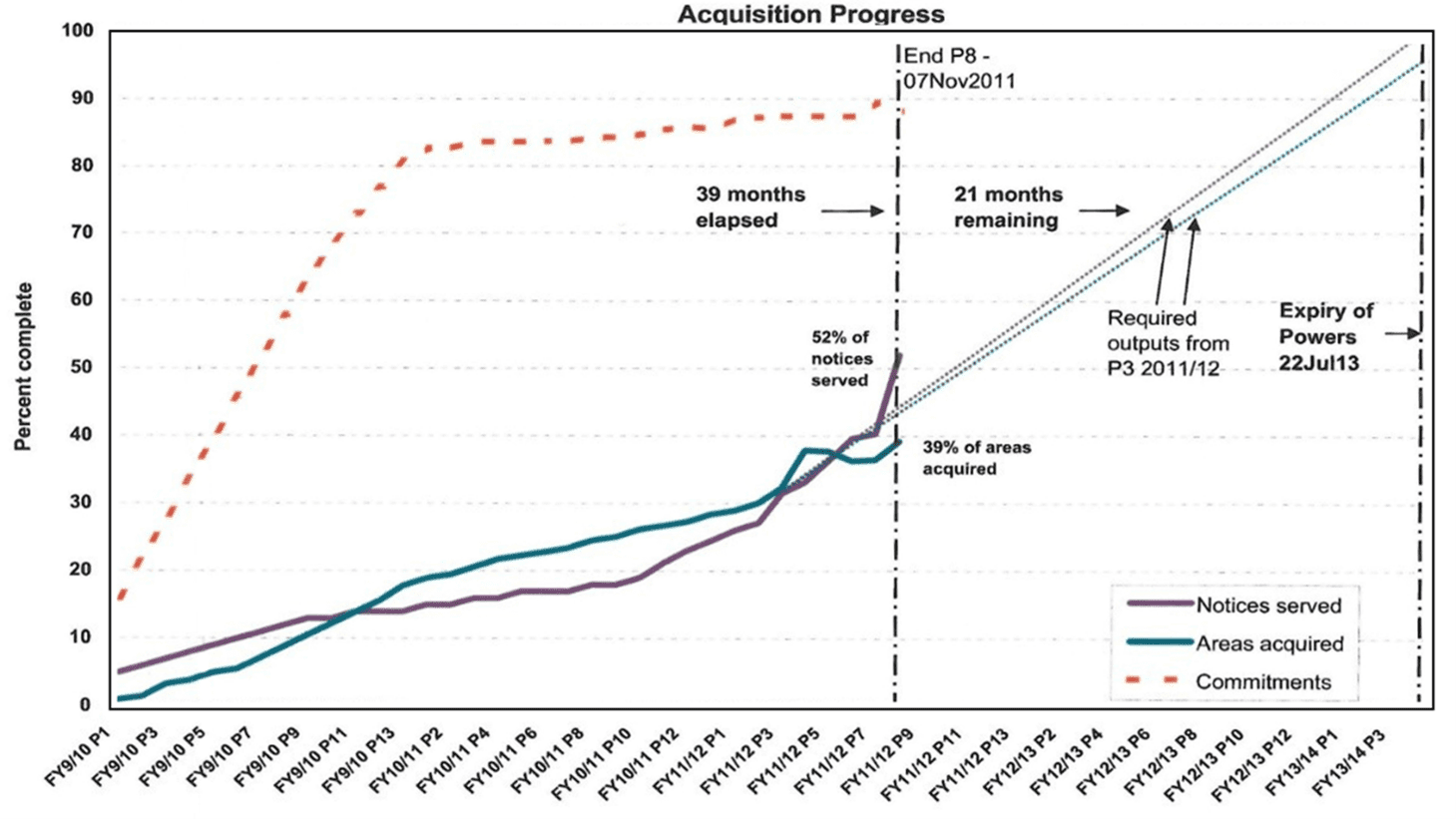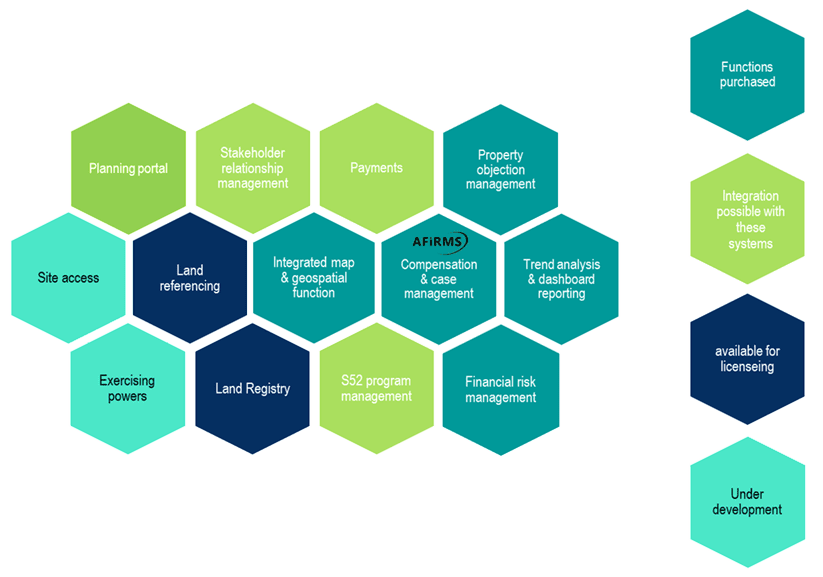How to Manage Exercise of Compulsory Purchase Powers
The fourth in a series of articles by the aspireCP team looking at best practice in compulsory purchase from an acquiring authority’s perspective.

Start of construction on any project is a momentous occasion, usually marked by celebrations and photo opportunities whether it be a huge national project like HS2 or on a smaller, more local scale. But what all have in common is that construction can only commence when the project has secured entry onto the land. For major projects that generally means after service of the required notices on owners and occupiers to ‘exercise’ compulsory acquisition powers.
The ‘exercise of powers’ phase is on a par with the Public Inquiry as the most intensive period of activity for an acquiring authority in any compulsory purchase project. It is the time when, you can have most influence on managing claims risks and minimising property costs through active engagement with claimants (see separate articles to come on constructive engagement and managing financial risk). Access to land is often on the project critical path and there is a limited time-period to ensure the right notice is served to gain entry in line with the contractors’ programme.
Influencing the Evolving Project
The primary objective during exercise of powers is to secure land in time for construction. To be successful, it is essential that the property team plays a proactive role and can influence design, constructability, procurement and programme. Evolving designs will likely be architect and engineering led, and they will not necessarily be informed by land and property considerations. Especially with linear infrastructure schemes, the cheapest design may be a straight line between two points, but this may require expensive acquisitions and/or be very difficult to deliver. The best solution for the project as a whole will therefore require a cost-benefit analysis encompassing design, construction and property considerations. For the same reasons, property acquisitions specialists also need to be involved during the Early or Optimised Contractor Involvement (ECI/OCI) process.
Main Works Contracts
Securing possession of land too early is often expensive and newsworthy. Best practice is for the property client to set out milestones from which land can be made available with a margin for risk and then require construction tenders to specify milestones for the delivery of land using groups of ‘work areas’ based on related parcels from the book of reference. This will give both a target possession date and a contractors’ possession date. Additionally, property obligations will need to be written into contracts at procurement stage, with contractors required to accept responsibility for effective care, custody and control of land, including keeping the land secure, managing health and safety or security risks and setting out the condition in which the land will be taken and handed back. Where land is taken temporarily, consideration should also be given to pain/gain incentivisation of contractors to return the land on time as property costs will potentially be increased by any schedule overruns.
Throughout all this there will be a continual need for close liaison between the property team, programme managers and contractors. Service of notices will be planned around the construction programme, with occupation taken as notices expire. This avoids penalties for contract delay but needs land to be occupied by contractors as soon as notices expire so that the acquiring authority does not end up paying for the additional management and health and safety obligations.
Acquisition Methods
Once compulsory purchase powers are in place, there remain several means by which acquiring authorities can secure the land required for construction. The simplest is to continue the negotiations started in advance of Public Inquiry with a view to completing purchase by agreement, albeit now in the knowledge that if negotiations fail compulsory purchase notices can be served and with compensation pegged to the ‘compensation code’ without any additional incentives for early purchase. But, possession will normally be taken by serving one of the two potential forms of compulsory purchase notice:
- The first is a notice to treat (NTT) which exercises the powers and gives the acquiring authority the right to take possession following service of a notice of entry (NoE) that specifies a date (usually not less than 3 months away) when the acquiring authority proposes to enter and take possession of the property. Although authorities are not obliged to enter on the specified date and frequently do so later. Experience suggests that many claimants and their advisers do little or nothing about their claim until they have received the formal NTT and so, tactically, it is often best to serve the NTT early. It is then possible and often desirable to provide a much longer period between NTT and NOE, allowing occupiers time to find alternative premises and only exposing the acquiring authority to the costs of relocation, rather than the much greater cost, for example, of closing businesses down altogether. The main downside of the NTT approach is that, whilst the acquiring body can take possession of the premises on expiry of the NOE, the actual title is not conveyed until after compensation has been agreed. This can be a protracted process and may even require the matter to be referred to the Upper Tribunal. The date that the acquiring authority enters and takes possession of the land (following service of NoE) must be within three years from the date of the service of the notice to treat.
- The second form of compulsory acquisition, introduced in the 1980’s is the General Vesting Declaration (GVD) process and here, not only does the GVD give the acquiring authority the right to enter onto and take possession of the land, but it automatically vests title in the acquiring authority on the day the GVD comes into force (‘the vesting date’). Current regulations require stating the effect to a GVD in the Notice of Confirmation of the CPO. The GVD may then be executed by a notice immediately following confirmation, giving the period when the GVD will come into force (after a minimum of three months).
Neither approach removes covenants from title, but both give possession in advance of compensation being agreed. There are pros and cons with both approaches and legal advice should be taken to determine which form of notice is most appropriate in each circumstance. NTT/NOE potentially provides a little more flexibility as NTTs may be withdrawn. Whereas a GVD enables the acquiring authority to assemble clean title to a site quickly, which may be useful, for example if the authority intends to sell the CPO land for development by a third party. But a GVD has no effect on Minor Tenancies (which can be dealt with by a Notice to Treat and a Notice of Intention to Enter) and is potentially a blunt tool since title transfers as an operation of law and it is not possible to agree revised vesting dates with the owner/occupiers. If the acquiring authority wishes occupiers to remain for a period this may be managed via agreement to tolerated trespassers or on short-term tenancies, but this in turn introduces greater complexity and brings enforcement risks.
In terms of acquisition tactics, the acquiring body could also choose to acquire only the freeholds or any superior interests such as headleases under CPO powers and then use landlord and tenant powers to terminate leases contractually. On this basis there would be no entitlement to compensation for tenants under the CPO ‘compensation code’, thereby reducing the compensation bill. It is therefore worth considering as one of the tools in the acquiring authority’s armoury. However, compensation savings will be negated if the contractual process is not complete before compulsory purchase powers are exercised and there could be public relations issues as tenants’ rights to compensation are materially reduced.
Sometimes, acquiring authorities may only require land or be granted powers for temporary occupation. But, care is needed in exercise of such powers as there is complexity in the notice and counter-notice procedures and compensation, based on “any loss or damage”, can be greater than freehold acquisition. On this basis it should be avoided unless a rent can be pre-agreed. This is particularly the case for potential development sites where highly geared land values are very susceptible to small input changes.
Process to manage Service of Notices
Before the Acquiring Authority can confidently proceed with action to serve the notices, it will need to determine which notice will be most effective and gather all necessary information to serve notices correctly. An example of the process operated by Crossrail is set out in the flow-chart below. All notices were served according to a structured and stage-gated process, with multiple layers of checking and governance to provide assurance of accuracy and leave a clear audit trail that would withstand challenge.
The Crossrail process started with a Final Land Acquisition Boundaries (FLAB) assessment, a process which was developed on HS1 and is also operated by HS2 and Highways England. It can be a helpful process of interrogation and challenge involving acquisitions specialists, designers and where possible contractors to determine precisely what land was needed in each location and the date on which each land parcel is required.

Wherever possible FLAB should be synchronised with bringing contractors on board, as this will allow ECI/OCI processes to influence land requirements and avoid having to start the process again or having to serve additional notices, taking phased entry or accepting more costly construction solutions. However, care needs to be taken not to follow process for process sake and to stand back and review whether FLAB has produced a sensible answer that, for instance, does not deliver too little land, reducing flexibility as designs evolve and leading to increased construction costs.
Crossrail’s process then reviewed the property related commitments and undertakings to ensure all commitments made to landowners were taken into account and determined whether there were any physical or time scale impacts arising, e.g. longer notice periods, surveys or additional works required to maintain access. It also factored in variations to the process required by special category land, (e.g. Crown land, parks and common land).
The next requirement is for refreshed and updated land referencing to identify who owns the land, thereby ensuring the notices are served on the correct parties. There is also a need to gather enough information about the affected parties to understand what issues they have in relocating. Effective and continuous engagement with affected parties is dealt with elsewhere in this series of articles (see articles on Land Referencing and on constructive engagement) But the objective at this stage is to understand and assess both the impacts and risk on occupiers of the proposed exercise of powers and, where appropriate, to amend the notice period, possession date or type of notice to be served to mitigate such impacts. Constructive engagement is a time-consuming exercise and should ideally start well before Public Inquiry.
The form of notice and/or the accompanying covering letter should be written to be intelligible to the lay person and we would strongly recommend subjecting these documents to the Plain English Campaign ‘Crystal Mark’ standard. The additional time and cost involved will be repaid many times over in avoiding misunderstandings and reducing wasted time for community relations and/or property teams. A Plan to accompany each notice will also be prepared, with Ordnance Survey base mapping and shading showing the land to be acquired. The creation of the plans will also be time-consuming, and will require sufficient time for verification of all details. With both notices and plans complete and verified, the notice package can at last be served by either registered post or wherever possible by hand to provide both confidence in and verifiable proof of delivery.

Notwithstanding the Acquiring Authority’s best endeavours, it is likely that some notices may be returned, stating party no longer resident etc. Further enquiries can then be made to identify the status of the property, parties and interests. But, where the owner of a property cannot be identified, notices cannot be served. It will be important to record these instances and prepare a case file to provide evidence of “diligent enquiries” undertaken to identify the owners via land registry search, copies of correspondence, evidence of site visits and telephone enquiries etc.
The acquiring authority can still take possession in such instances by following an ‘unknown owner’ procedure (either by GVD or NTT) including posting notices on site, then executing a Deed Poll which will vest title in the land. The Lands Tribunal will appoint a Surveyor to undertake an independent valuation against which the acquiring authority will pay the equivalent compensation into Court in case an owner that can prove title comes forward. If no-one comes forward after 12 years, the compensation can be recovered by the acquiring authority.
The race against time
Hopefully, it will be clear from the above that ‘exercise of powers’ is not a simple process. Another key point to note is that the acquiring authority has only a limited statutory time-period within which to serve notices. In most cases this will be three years from confirmation of the CPO, although on mega projects like Crossrail or HS2 there may be a five-year window. When aspire’s Ian Lindsay arrived as Crossrail’s Land & Property Director in the first half of 2011, it soon became clear that serving Crossrail’s notices in the time available was becoming a major project risk.
The graph below illustrates the position in November 2011, such that nearly two thirds of the way through the time available, the project had acquired less than 40% of the land. However, the tracking of notices, whilst giving a perfect ‘rear-view mirror’ of where we had been, was not able to project forward with any certainty how Crossrail could get to the July 2013 cut-off having served all its notices.

Seeking an extension of time to exercise the powers is not an option and neither is failing to secure land on time for construction as this opens up your project up to contract penalties. Crossrail’s stage gates are set out below and were built into the project’s Primavera P6 scheduling system to give an assumed entry date, informed by a stability & complexity tool through which to estimate which work areas might take longer or shorter than the average.


With dates locked into the scheduling system, a monthly dash-board report gave managers real-time data on what stage every work area had reached in the system. The dashboard below is from March 2012, some 16 months out from the expiry of Crossrail powers.

The top-left quadrant provides a waterfall diagram categorising the stage reached across all 180 Work Areas, together with progress bars highlighting change from one month to the next. Bottom left tracked progress by section of the route and bottom right tracked risks, issues and costs. Finally, top right the dashboard used leading indicators to give an overall programme completion estimate, which in March 2012 was predicting completion by the end of March 2013, representing almost four months float. Whilst Crossrail didn’t quite manage to get the job done four months early, having a notice scheduling system that gave the property team confidence that they knew where they were and where they were going so that the workload could be planned with confidence and the final notices were served on 18 July 2013, the last working day in advance of the deadline!
Systems and Processes
This highlights the critical importance of good processes, systems, governance and reporting when exercising powers. Exercise of powers really lends itself to automation, but unfortunately there is no proprietary system to link all the elements together and, with the limited window for exercising powers, projects just don’t have the time to build IT systems from scratch. However, it is high time that the compulsory purchase industry graduated from its rag-bag of spreadsheets, maps and mailing lists to operate a properly integrated system.
Imagine a future where the GIS map base is overlaid with the powers obtained. This could be fed with a dynamic link to land referencing and a properly constructed database of all the commitments and undertakings. Notices and plans could be automatically generated at the press of a button. In turn this would link to property and claimant data, giving control of the property cost estimate through compensation case management, active management of risk and the payments and cash-flow reporting. It would also link to stakeholder relationship management, scheduling systems and planning data providing an integrated series of IT systems as a single source of truth for the project, providing managers with a powerful trend analysis and dashboard reporting tool. This is not a pipe-dream, aspire are already developing our Acquisitions Financial Risk Management System (AFiRMS), which will launch during 2021 with a GIS integrated map and geospatial database function through which to import land referencing data. As a modern, web-based system it can integrate easily with other MS Dynamics based systems and we are already specifying future modules for exercising powers and managing possessions/access to sites. The future is nearly here!

If you want to know more, please eplore the rest of our our web-site at www.aspireCP.com, follow us on LinkedIn @ aspire Compulsory Purchase LLP or contact:
Ian Lindsay ilindsay@aspireCP.com +44 7920 155 779
Adrian Maher amaher@aspireCP.com +44 7976 881 303
© Copyright aspireCP LLP 2021
All rights reserved. No part of this article may be reproduced in any form without permission in writing from the copyright owner, except by a reviewer who may quote brief passages in a review providing this is suitably referenced.
Whilst this article is believed to be correct at the date of issue neither the author nor aspireCP LLP accept any liability for the accuracy or completeness of the information contained in this article.
